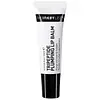What's inside
What's inside
 Key Ingredients
Key Ingredients

 Benefits
Benefits

 Concerns
Concerns

 Ingredients Side-by-side
Ingredients Side-by-side

Octyldodecanol
EmollientIsononyl Isononanoate
EmollientPropylene Glycol Dibenzoate
Skin ConditioningPhenyl Trimethicone
Skin ConditioningBis-Behenyl/Isostearyl/Phytosteryl Dimer Dilinoleyl Dimer Dilinoleate
EmollientPolymethylsilsesquioxane
Dextrin Palmitate/Ethylhexanoate
EmulsifyingTrimethylsiloxyphenyl Dimethicone
Ethylcellulose
Dextrin Palmitate
EmulsifyingSilica Silylate
Emollient1,2-Hexanediol
Skin ConditioningSorbitan Isostearate
EmulsifyingLauryl Polyglyceryl-3 Polydimethylsiloxyethyl Dimethicone
Skin ConditioningCaprylyl Glycol
EmollientEthylhexylglycerin
Skin ConditioningDiisostearyl Malate
EmollientCI 77891
Cosmetic ColorantCI 42090
Cosmetic ColorantWater
Skin ConditioningAluminum Hydroxide
EmollientPropyl Gallate
AntioxidantSorbitan Sesquioleate
EmulsifyingCI 17200
Cosmetic ColorantTocopherol
AntioxidantLeontopodium Alpinum Callus Culture Extract
AntioxidantPrunus Persica Flower Extract
MoisturisingCopper Tripeptide-1
Skin ConditioningTripeptide-1
Skin ConditioningPalmitoyl Pentapeptide-4
Skin ConditioningOligopeptide-1
Skin ConditioningDipeptide-2
Skin ConditioningOctyldodecanol, Isononyl Isononanoate, Propylene Glycol Dibenzoate, Phenyl Trimethicone, Bis-Behenyl/Isostearyl/Phytosteryl Dimer Dilinoleyl Dimer Dilinoleate, Polymethylsilsesquioxane, Dextrin Palmitate/Ethylhexanoate, Trimethylsiloxyphenyl Dimethicone, Ethylcellulose, Dextrin Palmitate, Silica Silylate, 1,2-Hexanediol, Sorbitan Isostearate, Lauryl Polyglyceryl-3 Polydimethylsiloxyethyl Dimethicone, Caprylyl Glycol, Ethylhexylglycerin, Diisostearyl Malate, CI 77891, CI 42090, Water, Aluminum Hydroxide, Propyl Gallate, Sorbitan Sesquioleate, CI 17200, Tocopherol, Leontopodium Alpinum Callus Culture Extract, Prunus Persica Flower Extract, Copper Tripeptide-1, Tripeptide-1, Palmitoyl Pentapeptide-4, Oligopeptide-1, Dipeptide-2
Ricinus Communis Seed Oil
MaskingHydroxystearic/Linolenic/Oleic Polyglycerides
EmollientGlyceryl Rosinate
PerfumingTheobroma Grandiflorum Seed Butter
Skin ConditioningButyrospermum Parkii Butter
Skin ConditioningEthylhexyl Palmitate
EmollientCandelilla Cera
EmollientMangifera Indica Seed Butter
Skin ConditioningOrbignya Oleifera Seed Oil
EmollientSqualane
EmollientCetearyl Ethylhexanoate
EmollientHydrogenated Olive Oil
Skin ConditioningSalvia Hispanica Seed Oil
MoisturisingCaprylic/Capric Triglyceride
MaskingGlyceryl Behenate
EmollientOlea Europaea Oil Unsaponifiables
Skin ConditioningTribehenin
EmollientSorbitan Isostearate
EmulsifyingTocopherol
AntioxidantPortulaca Pilosa Extract
Skin ConditioningTrihydroxystearin
Skin ConditioningHelianthus Annuus Seed Oil
EmollientSucrose Cocoate
EmulsifyingBrassica Alba Sprout Extract
Skin ConditioningSodium Hyaluronate
HumectantPalmitoyl Tripeptide-1
Skin ConditioningPalmitoyl Tripeptide-38
Skin ConditioningGlucomannan
Skin ConditioningRicinus Communis Seed Oil, Hydroxystearic/Linolenic/Oleic Polyglycerides, Glyceryl Rosinate, Theobroma Grandiflorum Seed Butter, Butyrospermum Parkii Butter, Ethylhexyl Palmitate, Candelilla Cera, Mangifera Indica Seed Butter, Orbignya Oleifera Seed Oil, Squalane, Cetearyl Ethylhexanoate, Hydrogenated Olive Oil, Salvia Hispanica Seed Oil, Caprylic/Capric Triglyceride, Glyceryl Behenate, Olea Europaea Oil Unsaponifiables, Tribehenin, Sorbitan Isostearate, Tocopherol, Portulaca Pilosa Extract, Trihydroxystearin, Helianthus Annuus Seed Oil, Sucrose Cocoate, Brassica Alba Sprout Extract, Sodium Hyaluronate, Palmitoyl Tripeptide-1, Palmitoyl Tripeptide-38, Glucomannan
 Reviews
Reviews

Alternatives
Ingredients Explained
These ingredients are found in both products.
Ingredients higher up in an ingredient list are typically present in a larger amount.
Sorbitan Isostearate is an emulsifer and cleaning agent. It is created from isostearic acid and sorbitol.
As an emulsifier, Sorbitan Isostearate prevents oils and water from separating.
Due to its isostearic acid base, it may not be safe for Malassezia or fungal acne.
Learn more about Sorbitan IsostearateTocopherol (also known as Vitamin E) is a common antioxidant used to help protect the skin from free-radicals and strengthen the skin barrier. It's also fat soluble - this means our skin is great at absorbing it.
Vitamin E also helps keep your natural skin lipids healthy. Your lipid skin barrier naturally consists of lipids, ceramides, and fatty acids. Vitamin E offers extra protection for your skin’s lipid barrier, keeping your skin healthy and nourished.
Another benefit is a bit of UV protection. Vitamin E helps reduce the damage caused by UVB rays. (It should not replace your sunscreen). Combining it with Vitamin C can decrease sunburned cells and hyperpigmentation after UV exposure.
You might have noticed Vitamin E + C often paired together. This is because it is great at stabilizing Vitamin C. Using the two together helps increase the effectiveness of both ingredients.
There are often claims that Vitamin E can reduce/prevent scarring, but these claims haven't been confirmed by scientific research.
Learn more about Tocopherol